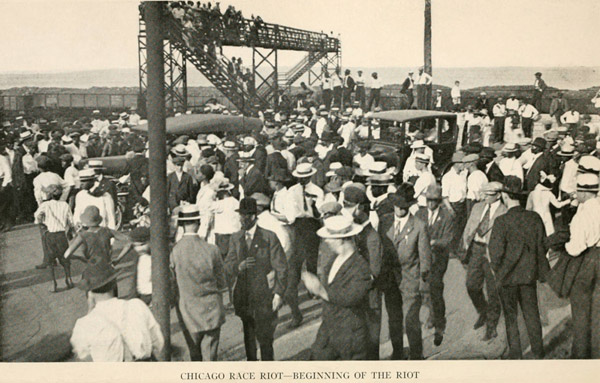
A few things—calls for hearings on violence in Chicago, a discussion of Carl Sandburg's reporting on the Chicago race riot of 1919—conspired to remind me of one of the first instances of a crime commission: The Negro in Chicago: A Study of Race Relations and a Race Riot, published three years after the riot (and a summer that brought many race riots to American cities, the Red Summer of 1919).
The study was led by Charles S. Johnson, a pioneering University of Chicago sociologist who was an ideal author: he moved with his family to Chicago from the South before the Great Migration proper, and completed his Ph.D. in sociology as the Chicago school was being born. Johnson and his colleagues produced an epic, a report that touches on all aspects of life in Chicago in the teens and '20s, from housing to transportation to education to recreation. It was also pioneering in its use of maps, not just crime and housing maps but transit maps designed to show inequality in public transportation and access to green space and recreation. Some of those maps, along with many photographs from the aftermath of the riot and the social context it took place in, are below.
It's an essential piece of Chicago history, and an eerily prescient one; these issues of transportation, recreation, education, mob violence, and housing are still with us. That's one of the paradoxes of Chicago—long one of the most problematic big cities in Chicago, and also, arguably, the most closely studied big city in the world.


